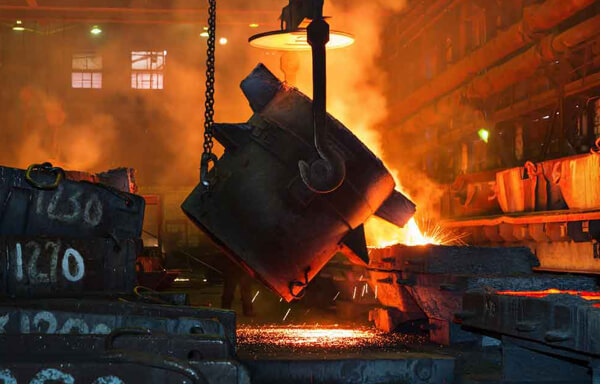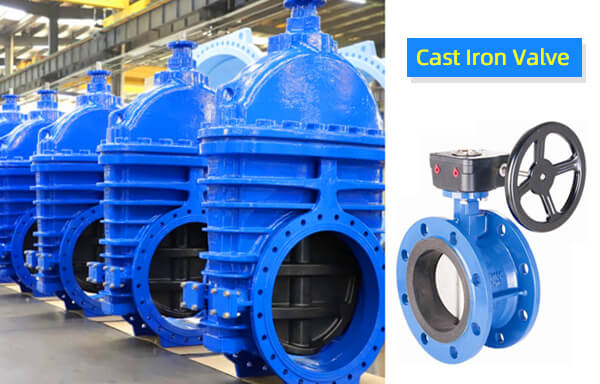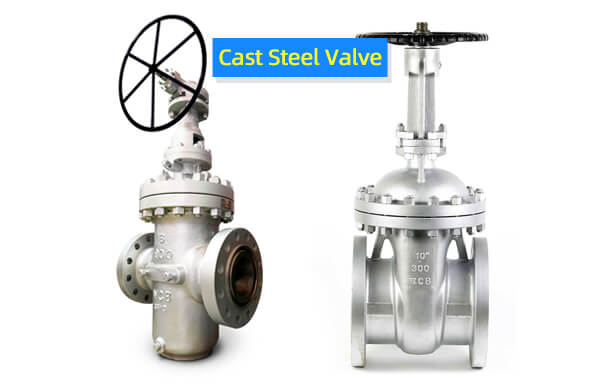- Gate valve
-
- DN1000 Extension stem double flange soft seal gate valveDIN F4 resilient seated gate valveDN450-1200 Resilient Seated Gate ValveDIN F5 resilient seated gate valveSocket connection soft seal gate valveUnderground cap soft seal gate valveBS5163 rising stem soft seal gate valveHard seal gate valveAPI slab Gate ValveStainless steel flange gate valveWafer knife gate valvePneumatic gate valveSoft seal gate valveExtension stem gate valveUL/FM fire protection groove ends gate valveRising stem forged steel gate valvecarbon steel gate valveStainless steel threaded gate valveDIN soft seal gate valveANSI soft sealing gate valve 200PSICast iron gate valveBS resilient seated gate valve
- Butterfly valve
-
- DN900 pneumatic triple eccentric hard seal butterfly valveD643H Triple Eccentric Butterfly ValveD343H Hard seal butterfly valveMulti standard EPDM seated butterfly valveSingle flange butterfly valveDN2000 Double eccentric butterfly valveFlange butterfly valveLug butterfly valveWafer butterfly valve with handleWorm gear operated butterfly valveWafer lined fluorine butterfly valveStainless steel wafer butterfly valveStainless steel flanged butterfly valveThree eccentric flange butterfly valvePneumatic flanged butterfly valvePneumatic wafer butterfly valveTriple eccentric butterfly valve wafer typeWafer butterfly valve ULC approvedInflatable seat butterfly valveHigh performance butterfly valveGrooved end butterfly valveElectric soft seal butterfly valveFlange fluorine lined butterfly valveHandle aluminum butterfly valveWorm Gear Aluminum Butterfly ValveFull PTFE lined butterfly valve wafer typeOne stem no-pin wafer butterfly valveMulti standard aluminum stem butterfly valveStainless Steel wafer Butterfly ValveAluminium handle operated lug butterfly valveLever Operated Flange Butterfly ValveButterfly valve stemButterfly valve discButterfly valve seat
- Ball valve
-
- DN1400 top-mounted eccentric semi-ball valveFlanged three-way ball valveFully welded ball valveNatural gas ball valveHigh platform flange ball valve1 PC ball valveFixed ball valvePTFE seat flanged ball valveMetal seat ball valveAPI 6D ball valve3 Piece ball valveFull Bore 3 way ball valve L-Port3 Way T-Port ball valve2PC Ball valve female thread stainless steel
- Globe Valve
-
- API Carbon Steel Globe ValveBellows Globe ValveStainless steel flange globe valveStainless steel thread S type globe valveStainless steel thread B type globe valveCast Steel Globe ValvePiston Globe ValveWCB Carbon Steel Globe Check Valveelectric motorized control stainless steel SS316 globe valveBrass Globe ValveCryogenic Globe valveHT200 Globe ValveThreaded Stainless Steel Globe ValveGG25 Globe ValveANSI API Cast Steel And Stainless Steel Globe valve
- Check valve
-
- Rubber seal check valveDN800 Slow closing check valveDN800 Rubber Disc Check ValveButterfly Buffering Check Valvecheck valve with counter weightSilent Check ValveWCB Swing check valveSwing Check ValveSingle Chip Check Valve H74WStainless Steel Wafer Check ValveSwing Start Check ValveFoot check valveAPI Swing Check ValveDIN Flange check valveSingle plate check valveLifting Check ValveBottom ValveHammer Diminish Noises Check ValveWafer Check ValveWafer dual plate check valve
- Control valve
-
- Static Balancing ValveCage Guided Sleeve Globe Control ValveDN1000 Piston Flow Regulating ValveDN1600 Electric Actuator Flow Regulating ValvePneumatic Flanged Butterfly ValvePneumatic Wafer Butterfly ValveAngle Seat ValvePneumatic gate valveElectric three-way control valveElectric sleeve control valve
- Water Meter
-
- Vertical Type Water MetersStainless steel threaded water meterPiston water meterPlastic water meterMore flow rotor dry water meterspiral vane flange water meterCI wotlman water meter with pulse outputLXCLG(R) Vertical removable element woltman cold (hot) water meterSingle flow rotor dry water meterPrepaid Token Water MeterElectromagnetic flowmeterRotary Piston Liquid Sealed Water MeterRotary Piston Liquid Sealed Water Meter
- Air valve
-
- Double ball exhaust valveDoubleair Air Valve SaudiDoubleair Air Valve Southeast AsiaDoubleair Air Valve South AmericaDouble Air ValveThreaded Air ValveSingle Air ValveTriple Functions Air ValveAutomatic Air Release ValveAutomatic release valveAutomatic exhaust valveComposite Exhaust Air ValveBrass exhaust valveDouble Ball Air Valve
- Pipe Repair & Coupling
-
- Flexible Multi-Function Pipe Coupling ZFJ-SSS Semi-Circle Pipe Repair Clamp SJW-HDuctile Iron Band Repair ClampStainless Steel Band Repair ClampDouble-Section Pipe Repair CouplingFolding Type Pipe RepairSingle-Section Multi-Function Pipe Coupling MF-SGear-Ring Type Multi-Function Pipe Coupling GR-SZBW Damping Corrugated Hose
- Dismantling Joint
-
- VSSJAFC(CC2F) Detachable Flange Transmission JointVSSJA-2(B2F) Double Flange Limited Expansion JointVSSJA-1(BF) Single Flange Limited Expansion JointVSSJA(AF) Flange Loose Expansion JointJGD-B Threaded Rubber JointZBW Damping Corrugated HoseKXT-S Flexible Dual-Spherical Rubber JointKXT Rubber Soft JointFlange Adaptor
What's The Difference Between Cast Iron Valve And Cast Steel Valve
Definition of cast iron:
Cast iron usually refers to gray iron, ductile iron, and malleable iron. It is cast iron parts with carbon content higher than 2%.
The main classification of cast iron:
①Cast iron
Gray cast iron: such as HT200, HT250, etc., suitable for nominal pressure not greater than PN16, working temperature between a 10 ~ 100 ℃ oil, general nature of the liquid medium (water, steam, petroleum products, etc.): nominal pressure not greater than PN10, working temperature between -10 ~ 200 ℃ steam, general nature of the gas, gas, ammonia and other media (ammonia, alcohol, aldehyde, ether, ketone It is not applicable to hydrochloric acid, nitric acid, etc.) It is not applicable to hydrochloric acid, nitric acid, and other media. But it can be used in concentrated sulfuric acid because concentrated sulfuric acid can produce a passivation film on its metal surface to prevent the corrosion of cast iron by concentrated sulfuric acid.
②Malleable cast iron
Such as KTH350-10, KTH450-06, etc., suitable for nominal pressure not more than PN25, working temperature between 10 ~ 300 ℃ steam, general nature of the gas and liquid, oil, and other media; its corrosion resistance is similar to gray cast iron.
③Ductile iron
Such as QT400-15, QT450-10, etc., for the nominal pressure is not greater than PN25 working temperature in a 10 ~ 300 ℃ between the steam, general nature of the gas and oil and other media. Its corrosion resistance is strong and can work in a certain concentration of sulfuric acid, nitric acid, and acid salt. But not resistant to fluorine acid, strong alkali, hydrochloric acid, and ferric chloride hot solution of corrosion. Avoid sudden heat and cold when using, otherwise, it will break.
④Nickel cast iron:
Stronger alkali resistance than gray cast iron and ductile cast iron valves; used in dilute sulfuric acid, dilute hydrochloric acid, and caustic alkali, nickel cast iron is an ideal material for valves.
Casting requirements of gray cast iron:
①The surface of the castings should be clean of sticky sand, gates, risers, sand traps, scars, etc...
②Castings shall not have cracks, porosity, sand trapping, and other harmful defects.
③Castings shall not be hammered, plugged, or impregnated to eliminate leakage.
④Castings should be of moderate hardness, and easy to cut and process.
Definition of cast steel:
Cast steel usually refers to ordinary carbon steel and alloy steel. It is the cast steel parts with a carbon content of less than 2%.
Cast steel parts are solid metal objects produced by filling the voids in a mold with liquid steel. They can be used for many of the same carbon and alloy steels that can be produced as forged metal.
Carbon steels such as WCA, WCB, and WCC are available for use in media such as steam, non-corrosive gases, petroleum, and related products at working temperatures between -29°C and 425°C.
Carbon steel castings require:
① Steel for castings should be melted in an electric arc furnace or induction electric furnace.
② All castings should be heat-treated according to the requirements of the design drawings.
③Castings should be supplied in annealed, normalized, or normalized plus tempered condition; ASTM A 216/A216M castings are supplied in accordance with supplementary requirement S15, i.e. quenched + tempered, with quenching temperature in the range of 890 ~ 910°C and tempering temperature in the range of 500 ~ 650°C.
④Castings must be cooled to below the phase change temperature before heat treatment.
Comparison of the characteristics of cast iron and cast steel.
①Iron has better corrosion properties than steel.
②Cast iron is generally cheaper than cast steel.
③Cast iron is relatively easy to cast due to its own flow characteristics.










